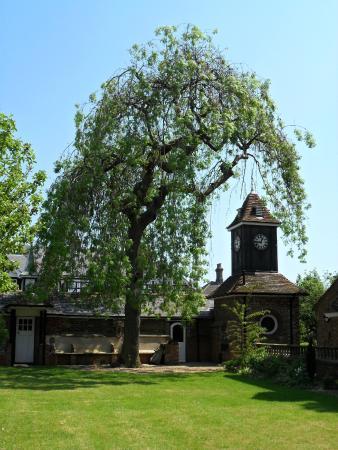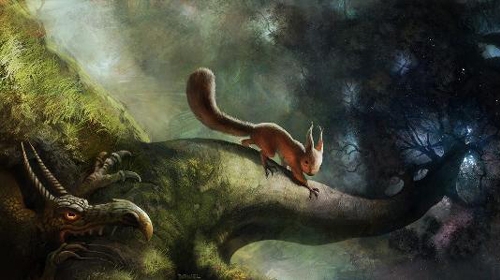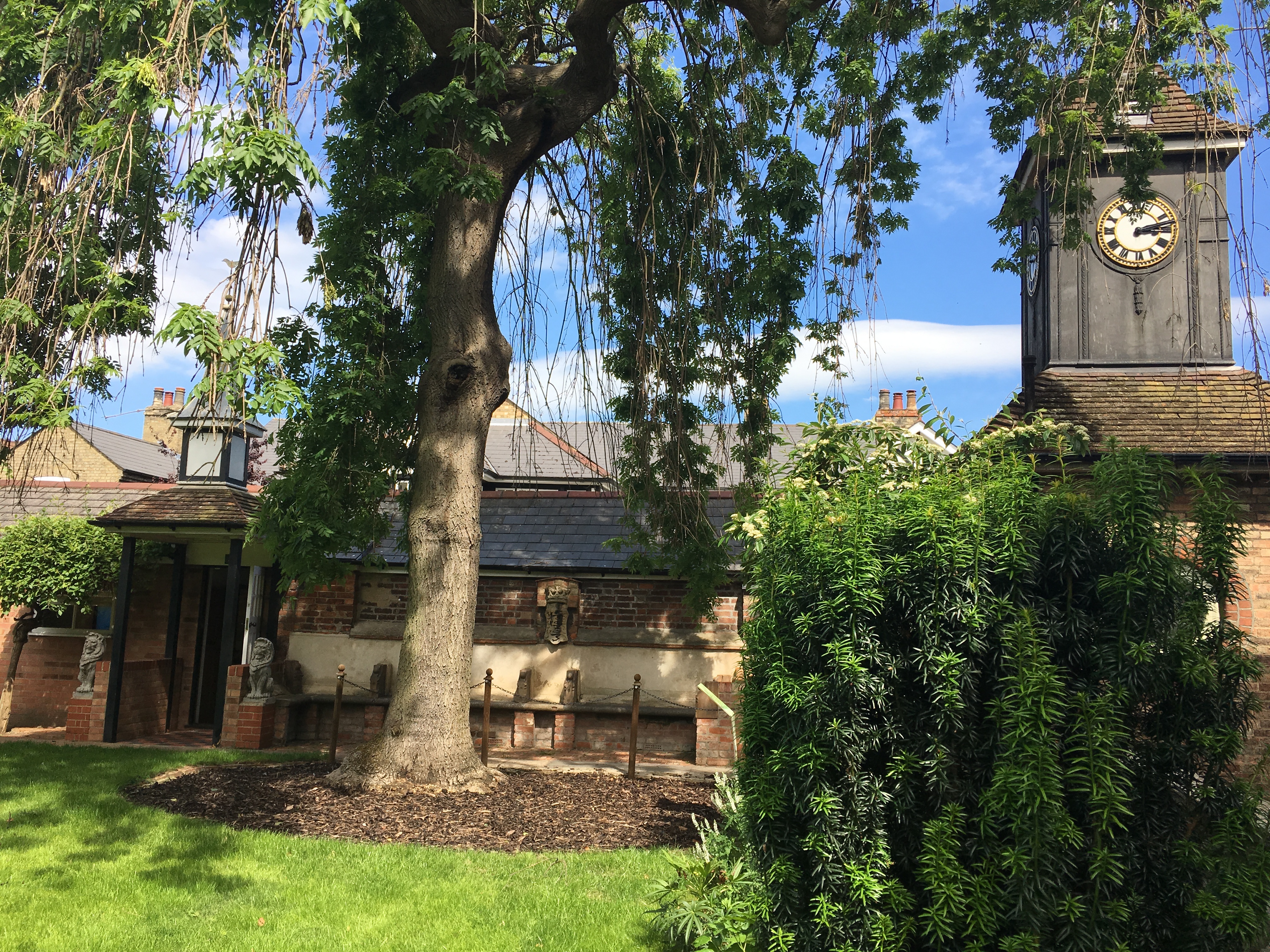Written by Panacea Museum volunteer Adrian Bean.
Very often, visitors say how impressed they are by the enormous copper Beech tree in the Museum Gardens. Then, as they walk further, they are even more struck by the large Weeping Ash tree growing on the Haven lawn.
Yggdrasil in front of the Chapel
Panacea Society member Rachel Fox claimed that a meeting of fifty or sixty people could easily be held beneath its branches. There are photographs of Mabel, Dilys and other Panaceans sitting underneath it- the tree was clearly important to them- and I've noticed that nowadays, the name often strikes a chord with more young visitors than older ones.
In Norse mythology, Yggdrasil is the world-tree, the Tree of Knowledge at the centre of the Universe. Its enormous roots are believed to bind together Heaven, Hell and Earth, and at its roots is a fountain of wonderful virtues. The Dragon / Serpent Níðhöggr gnaws at the roots, and the squirrel Ratatoskr runs up and down to carry messages and cause trouble between the unnamed Eagle at the top and the serpent at the bottom. When the tree breaks, monsters that are confined in the lower regions will be released for the final conflict. The Panacea Society Members believed that this Pagan symbolism was very relevant to their Twentieth Century Garden of Eden.
Níðhöggr and Ratatoskr
In 1928, Rachel Fox was disturbed when she saw a squirrel scampering about in the tree, perhaps concluding that just as it might have been seen as the spirit of Loki centuries before, it was now the sign of Satan working for Distress and Perplexity in her world.
It is a peaceful place to sit and think, just as the members did long ago, looking out over the lawn where Garden parties were held to welcome members to the Annual Meetings, some believers having come hundreds of miles to be close to their messiah.
It was through a door in the nearby Chapel that Emily Goodwin as the ‘Instrument of the Divine Mother’ defeated and banished evil spirits. A palm tree near the door died, but Yggdrasil lived on.
As late as 1964 one member, Miss Owen, was reprimanded by the council of the Society because she had cut some dangerous branches of Yggdrasil without permission. Such work should only be carried out by the Head of the Garden Committee, and she didn't have the necessary authority.
I've never seen a squirrel in the tree, and of course apart from a pet Jackdaw, pets generally weren't welcome in the Community properties. In fact, before Ellen Oliver moved from Surrey to Bedford, she had to have her cats put down, as Mabel believed domestic pets caused disruption and discord. There are photos of a young Dilys, happy with a pet dog, but after Mabel decreed pets were banned, it seems to have disappeared. In 1976, a servant was chastised for feeding the dog of a non-member neighbour.
Around Christmastime in 2016, Yggdrasil was covered with dozens of helium-filled balloons that were caught up in its branches as part of the finale of Jimmy Cauty's ADP Riot Tour art exhibition. Perhaps this was a Twenty-First Century equivalent of the squirrel Rachel Fox saw? If only that tree could talk, I think it would have enjoyed the experience.
And why does the name Yggdrasil resonate with younger visitors? Every generation recycles and reinterprets imagery and ideas from previous generations, and this Tree of Knowledge is no exception.









